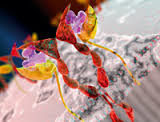There is concern being expressed about the growing number of drug shortages among essential and lifesaving cancer drugs.
The number of drug shortages reported to FDA annually has tripled from 61 in 2005 to 178 in 2010. Of the drug shortages reported in 2010, 132 involved sterile injectable drugs, with 28% of those being oncology drugs [1].
Essential chemotherapy drugs reported to be in short supply are mostly generic drugs used in childhood leukaemia and curable cancers. They include bleomycin, cytarabine, doxorubicin, leucovorin, methotrexate, paclitaxel, and vincristine [2].
Manufacturing problems was the main reason (43%) for drug shortages reported to FDA. Other problems included delays in manufacturing or shipping (15%) and shortages in active pharmaceutical ingredient (10%).
Sterile injectables have specific problems since manufacturing such products is complex and can more easily lead to problems that affect safety. They also often require dedicated manufacturing lines.
The top three generic injectable manufacturers hold 71% of the market by volume. Most sterile injectables have just one manufacturer that produces at least 90% of the drug (innovator and generic combined) [3].
‘Just-in-time’ manufacturing and inventorying practices leave little margin for error and do not allow for sudden increased demand.
Together, these factors make shortages of sterile injectables more likely to occur and harder to prevent or mitigate.
For oncology drugs these problems are being exacerbated by the fact that switching between brand-name and generic drugs adds to the cost of the already escalating costs of cancer care. There are also concerns for safety when switching between alternatives that require different doses.
The main cause of shortages in oncology drugs is reported to be economic. If drug makers do not make enough profit they will not make generic drugs. However, a cause specific to oncology drugs is that oncologists have less incentive to prescribe generics compared to brand-name drugs. This is because oncologists in the US supplement their earnings by dealing directly with wholesalers for chemotherapeutics. Since they receive the average sales price plus a 6% mark-up on all drugs it makes more financial sense to prescribe a more expensive brand-name drug. And this practice has lowered the demand for, and subsequently caused shortages, of some generics.
There are therefore calls to change this system since this obviously puts oncologists in potential ethical conflict with their patients, choosing drugs for financial reasons rather than based on their effectiveness. A system of disease-management fees and salaries for oncologists could dramatically change oncology practice, hopefully for the benefit of the patient.
Editor’s Comment
How can the US government ensure that life-saving cancer drugs continue to be available at reasonable prices? How can shortages in such essential drugs be avoided in the future?
Please feel free to share your thoughts via email to editorial@gabionline.net or in the comments section below. What do you think are the reasons for shortages in cancer drugs? Who is really to blame? How can the generics/biosimilars industry help to alleviate these shortages?
Related articles
Obama’s fresh attempts to ease drugs shortages in the US
Row continues over drug shortages
US drug shortages prompt oncologists to go into drug manufacture
US drug shortages – FDA may hinder, but APP may help
References
1. FDA. A review of FDA’s approach to medical product shortages. US FDA; 2011 Oct 31; USA.
2. Gatesman ML et al. The shortage of essential chemotherapy drugs in the United States. N Engl J Med. 2011;365(18):1653-5.
3. Haninger K, Jessup A, and Koehler K. Economic analysis of the causes of drug shortages. ASPE Issue Brief. 2011 October. Available from: aspe.hhs.gov/sp/reports/2011/drugshortages/ib.shtml








 0
0











Post your comment